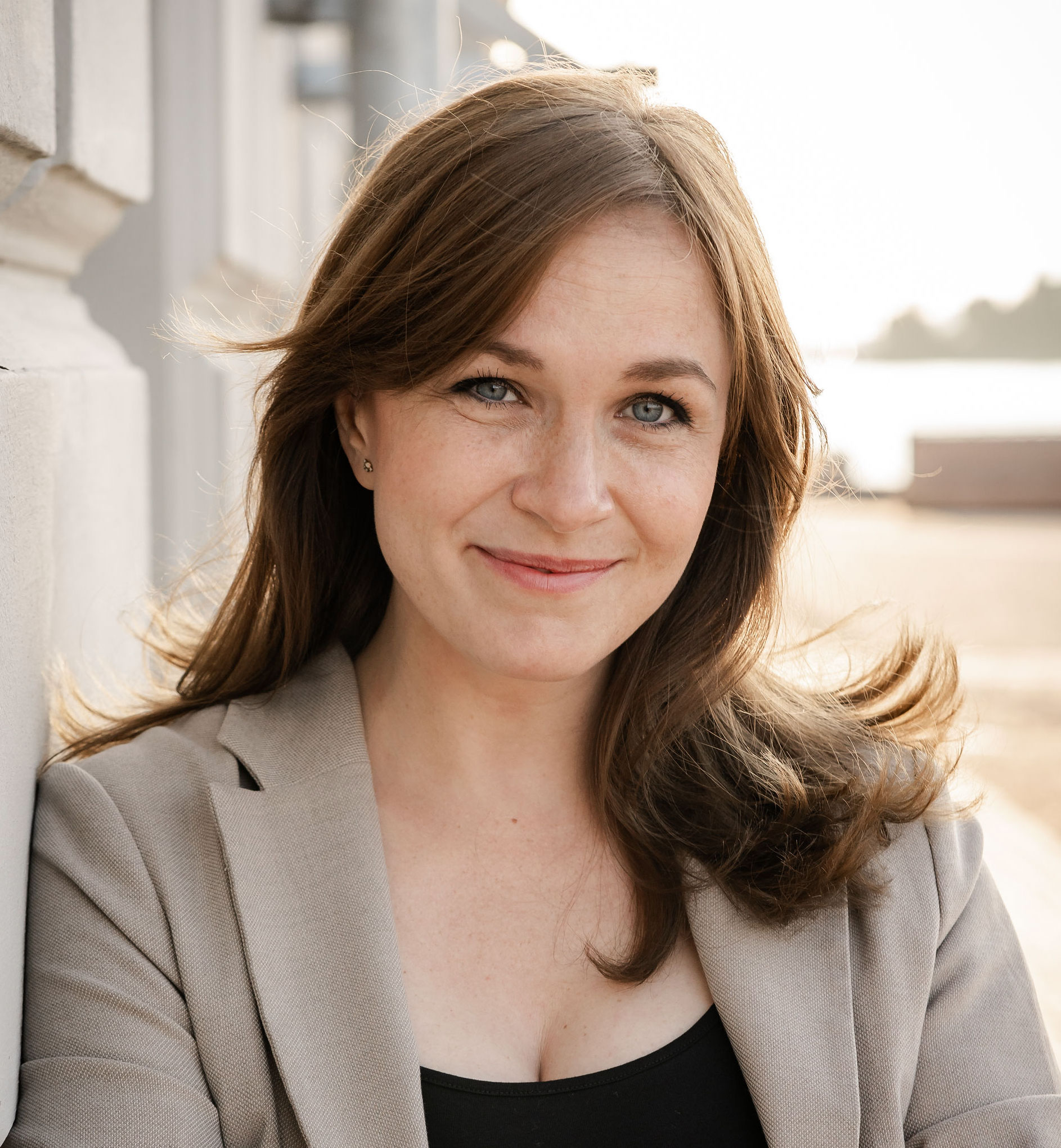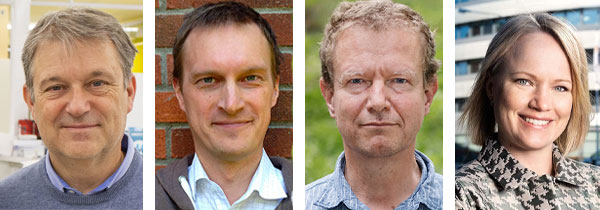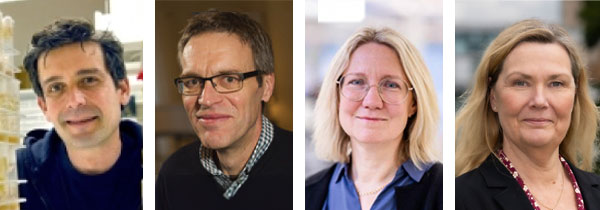The Atlas of Childhood Diseases (ACD) project, supported by the Erling-Persson Foundation, seeks to explore the cellular and molecular landscape of childhood diseases that have their origin in intrauterine development. By identifying previously inaccessible mechanisms behind these conditions, our goal is to utilize them to design innovative therapeutic approaches and highlight early diagnostic biomarkers, paving the way for better outcomes for children affected by these conditions.

Enikő Lázár is the project's scientific coordinator.
Tell us about the project.
– The Atlas of Childhood Diseases (ACD) project, supported by the Erling-Persson Foundation, seeks to explore the cellular and molecular landscape of childhood diseases that have their origin in intrauterine development. By identifying previously inaccessible mechanisms behind these conditions, our goal is to utilize them to design innovative therapeutic approaches and highlight early diagnostic biomarkers, paving the way for better outcomes for children affected by these conditions.
– This work builds on the consortium’s previous efforts within the Human Developmental Cell Atlas (HDCA) initiative, where we created high-resolution molecular maps in the embryonic and early fetal developmental phases of several organs, including the heart, lung, brain, and spinal cord. These studies do not only uncover previously uncharted details of human development, but provide a crucial foundation for investigating how developmental processes can go awry and lead to disease. Now the team, consisting of six core principal investigators from three different Stockholm-based universities (Joakim Lundeberg - KTH, Sten Linnarson - KI, Mats Nilsson - SU, Emma Lundberg - KTH/Stanford, Christos Samakovlis - SU, and Erik Sundström - KI) and two clinically active translational principal investigators (Anna Lindstrand and Anna Wedell - KI/KS), is expanding this research to investigate early-onset diseases affecting children. Our project focuses on congenital disorders, such as heart, lung, and brain defects developed during intrauterine development, genetic disorders called ciliopathies, affecting tiny hair-like structures with a crucial role in cell movement, signaling, and organ development, as well as childhood brain tumors.


– Many childhood diseases arise from a complex interplay between genetic and environmental factors, while the resulting molecular patterns are not possible to capture with traditional laboratory techniques. To bridge this gap, the project integrates clinical insights with cutting-edge single-cell and spatial omics technologies to capture a wide breadth of molecular components of the affected tissues, providing a more comprehensive view on the molecular underpinnings of these diseases. The team's extensive experience with these technologies, combined with the clinical genetics expertise of our clinical collaborators, uniquely position us to efficiently tackle these challenges. In the next phase, the team will translate these insights into tangible medical advances. By analyzing primary tissue samples from affected individuals and tumor biobanks, and investigating new and previously clinically available genetic datasets, we aim to uncover the origins of these diseases, identify new drug targets, and develop a next-generation nanoparticle therapy capable of precisely modulating or eliminating diseased cells. These efforts mark a significant advancement toward precision medicine for childhood diseases.
You are researchers from three different universities; how do you complement each other?
– Our team unites leading experts in developmental, cardiac, and lung biology, neuroscience, medical genetics, and biotechnology, spanning three Stockholm-based universities and Karolinska Hospital. This diverse expertise is the driving force behind our project, ensuring that we ask the most clinically relevant questions related to the investigated developmental conditions and cancer types, and apply the best-suited technologies to address them effectively.
– The success of this interdisciplinary approach was already demonstrated in the Human Developmental Cell Atlas (HDCA) project. However, in the current initiative, our close collaboration with clinically active researchers adds a new dimension, bringing direct insights from patient care, and sharpening our focus on the real-world impact of our research through bridging the gap between scientific discovery and patient benefit.
– Additionally, the principal investigators are supported by their dedicated research groups, composed of talented young researchers with diverse skill sets and international backgrounds, bringing fresh perspectives and technical expertise to this study. Notably, several of the cutting-edge molecular technologies we employ were either developed or first implemented in Sweden by our team members, who continue to drive innovation in these fields. This ensures that we generate the most comprehensive, high-quality, and reproducible data from the unique tissue samples analyzed.
– Many of our research groups are based at SciLifeLab, which provides world-class infrastructure for both experimental and bioinformatics analyses. Through access to key core facilities, including the National Bioinformatics Infrastructure Sweden, the National Genomics Infrastructure, the Spatial Omics and Clinical Genomics platforms, we can maximize the impact of our research, translating advanced technologies into meaningful insights for childhood diseases.
What are the advantages and challenges of working in such an interdisciplinary way?
– By leveraging the synergies outlined above, the Atlas of Childhood Diseases (ACD) project exemplifies how previously elusive insights into childhood diseases can be uncovered at the intersection of basic science, clinical medicine, and biotechnology. We are in the era of omics, where vast amounts of data can be generated in a single experiment. However, extracting meaningful conclusions from this wealth of information requires meticulously selected samples, the right technological approaches, rigorous analysis, and careful interpretation within the ever-evolving landscape of biology and medicine.
– This is far from a one-person effort, but even in an interdisciplinary setting it demands more than the sum of the parts: it necessitates a shared understanding of fundamental concepts across fields to foster seamless communication and truly integrative research. While this presents challenges, it is also profoundly rewarding, as it not only reshapes our understanding of childhood diseases but also broadens our individual skill sets, equipping us with the tools for future scientific breakthroughs.
In five years, what are your hopes for how your results will impact patient benefits?
– The journey from scientific discovery to clinical application is often long, especially for childhood diseases, where our understanding of their underlying mechanisms remains limited. While our ultimate goal is not only to deepen this knowledge but also to develop targeted nanoparticle therapies for specific cell types, the next five years will likely mark only the first steps toward this ambition.
– Even so, we are confident that our work will bring meaningful progress for patients and families by uncovering the molecular and cellular origins of developmental disorders and childhood brain tumors. By identifying key disease mechanisms and actionable therapeutic targets, we aim to lay the groundwork for future treatments that could transform the lives of children affected by these devastating conditions within the foreseeable future. Every single step moves us closer to more effective interventions, earlier diagnoses, and ultimately, better outcomes for young patients and their families, and with the Atlas of Childhood Diseases project we are determined to take a big one forward.
